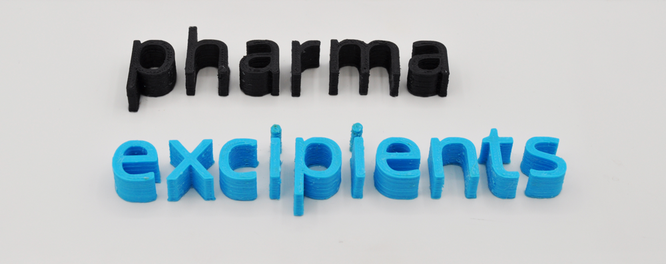- Home
- Blog
- News
- Basics
- Sources
- Agencies, Regulatory & Organisations
- CERSI Excipients Browser
- Excipient Report
- Excipient DMF List
- EXCiPACT Certified Companies
- Excipient Documentation
- Excipient EINECS Numbers
- Excipient E-Numbers
- FDA Inactive Ingredient List
- FDA GRAS Substances (SCOGS) Database
- IPEC Americas
- USP - U.S. Pharmacopeia
- Definitions
- Whitepapers / Publications
- Supplier
- Services
- Media
- Events
- 1st pharmaexcipients Poster Award
- Event Calendar
- Events featured by pharma-excipients
- 4th Annual Formulation & Drug Delivery Congress
- DDF Summit
- ExcipientFest Americas
- ExcipientFest Asia
- Global CompliancePanel
- International Conference and Exhibition on Pharmaceutics & Novel Drug Delivery Systems
- Formulation & Drug Delivery USA Congress
- Laboratory Medicine 2018
- Making Pharmaceuticals Europe
- Making Pharmaceuticals Exhibition
- Pharma Integrates
- PharmaExcipients China @CPhI China
- TTC Technology Training Center
- Jobs
- Online Sourcing
- Contact
08. August 2018
Three-dimensional printing (3DP) has the potential to cause a paradigm shift in the manufacture of pharmaceuticals, enabling personalised medicines to be produced on-demand. To facilitate integration into healthcare, non-destructive characterisation techniques are required to ensure final product quality. Here, the use of process analytical technologies (PAT), including near infrared spectroscopy(NIR) and Raman confocal microscopy, were evaluated on paracetamol-loaded 3D printed cylindrical...
06. August 2018
Hypothyroidism is a chronic and debilitating disease that is estimated to affect 3% of the general population. Clinical experience has highlighted the synergistic value of combining triiodothyronine (T3) and thyroxine (T4) for persistent or recurrent symptoms. However, thus far a platform that enables the simultaneous and independent dosing of more than one drug for oral administration has not been developed. Thermal inkjet (TIJ) printing is a potential solution to enable the dual deposition of...
30. July 2018
Three-dimensional printing is one of the fastest developing technology withinpharmaceutical field. With many advantages this method can be found as a new dosageform manufacturing technique, however low printing efficiency stays as one of the major limitations. Therefore, the preparation of filaments as a feedstock and printing of the final dosageforms in pharmacies may by the direction of development for this method. Thus, simple dosage and dissolution profile modification seems to be...
07. June 2018
3D printing evolved as a promising technique to improve individualization of drug therapy. In particular, when printing sustained release solid dosage forms, as for instance implants, inserts, and also tablets, estimation of the drug release profile in vivo is necessary. In most cases, corresponding analyses cannot be performed at hospital or community pharmacies. Therefore, the present study aimed to develop a sustained release drug delivery system produced via 3D printing, which allows dose...
09. April 2018
Some impressions of the 2018 PBP Worldmeeting on Pharmaceutics, Biopharmaceutics and Pharmaceutical Technology in Granada with over 1.300 participants. 4 parallel session on hot topics, poster session and accompanying Exhibition by ResearchPharm allowed intense exchange amongst the participipants. More Information on the event
10. December 2017
Fast dissolving oral films (FDFs) provide an alternative approach to increase consumer acceptance by advantage of rapid dissolution and administration without water. Usually FDFs require taste-masking agents. However, inclusion of these excipients could make developing the formulation a challenging task. Hence, this work employed fused-deposition modelling three-dimensional (FDM 3D) printing to produce single-layered (SLFDFs), or multilayered (MLFDFs) films, with taste-masking layers being...
18. October 2017
In the drug delivery area, versatile therapeutic systems intended to yield customized combinations of drugs, drug doses and release kinetics have drawn increasing attention, especially because of the advantages that personalized pharmaceutical treatments would offer.
13. February 2017
Abstract Extrusion based three dimensional (3D) printing is defined as a process used to make a 3D object layer by layer directly from a computer aided device (CAD). The application of extrusion based 3D printing process to manufacture functional oral solid tablets with relatively complex geometries is demonstrated in this thesis. In Chapter 3 the viability of using a basic desktop 3D printer (Fab@Home) to print functional guaifenesin bilayer tablets (GBTs) is demonstrated. Guaifenesin is an...
22. November 2016
INTRODUCTION In recent years, the use of 3D printing (3DP) for formation of custom dose forms has received increasing research interest for pharmaceutical applications. To date limited API loadings have been achieved. Current fused deposition modelling (FDM) approaches utilise a formulated filament (e.g. polymer and active) as a feedstock which can be made by hot-melt extrusion (HME). One key purpose of this work is to explore methods of achieving developing a viable routes to establishing...
04. November 2016
The use of various types of printing technologies offer potential solutions for personalized medicine and tailored dosage forms to meet the needs of individual treatments of the future. Many types of scenario for printed dosage form exist and the concepts include, on the simplest level, accurately deposited doses of drug substances. In addition, computer design allows endless opportunities to create suitable geometries with tailored functionality and different levels of complexity to control...







